When a Storm is Brewing: A Plano Resident’s Guide to Barometric Pressure Migraines
Living in Plano, you know the weather changes. Sudden storms and fronts cause barometric pressure migraines. Get help for the headaches and throbbing pain.

December 9, 2025
Hi, it’s Satoru from hariQ acupuncture & herbs. In this blog, I want to share some tips on how to deal with persistent, annoying heel pain.
Does it ever happen to you that the first few steps you take in the morning are painful? Or maybe your feet start to hurt after walking for a while? The pain is sharp and feels like needles poking your soles every time you step on the floor. You may have tried expensive insoles or even visited a foot doctor who diagnosed you with plantar fasciitis, a condition you may have never heard of before. In severe cases, the doctor may recommend a steroid injection or, in the worst case, surgery, which may sound scary to you.
However, there are 6 simple steps you can do at home to take care of yourself and avoid risky injections or surgery. Give these exercises a try and feel the difference for yourself.
We understand this can be a lot of information and overwhelming: if you are looking for more support and answers, set up a free consultation with our Pain Specialist, Satoru Ozawa. Share your story, get your questions answered, and learn how you can set yourself up for tremendous success in achieving a healthy life.
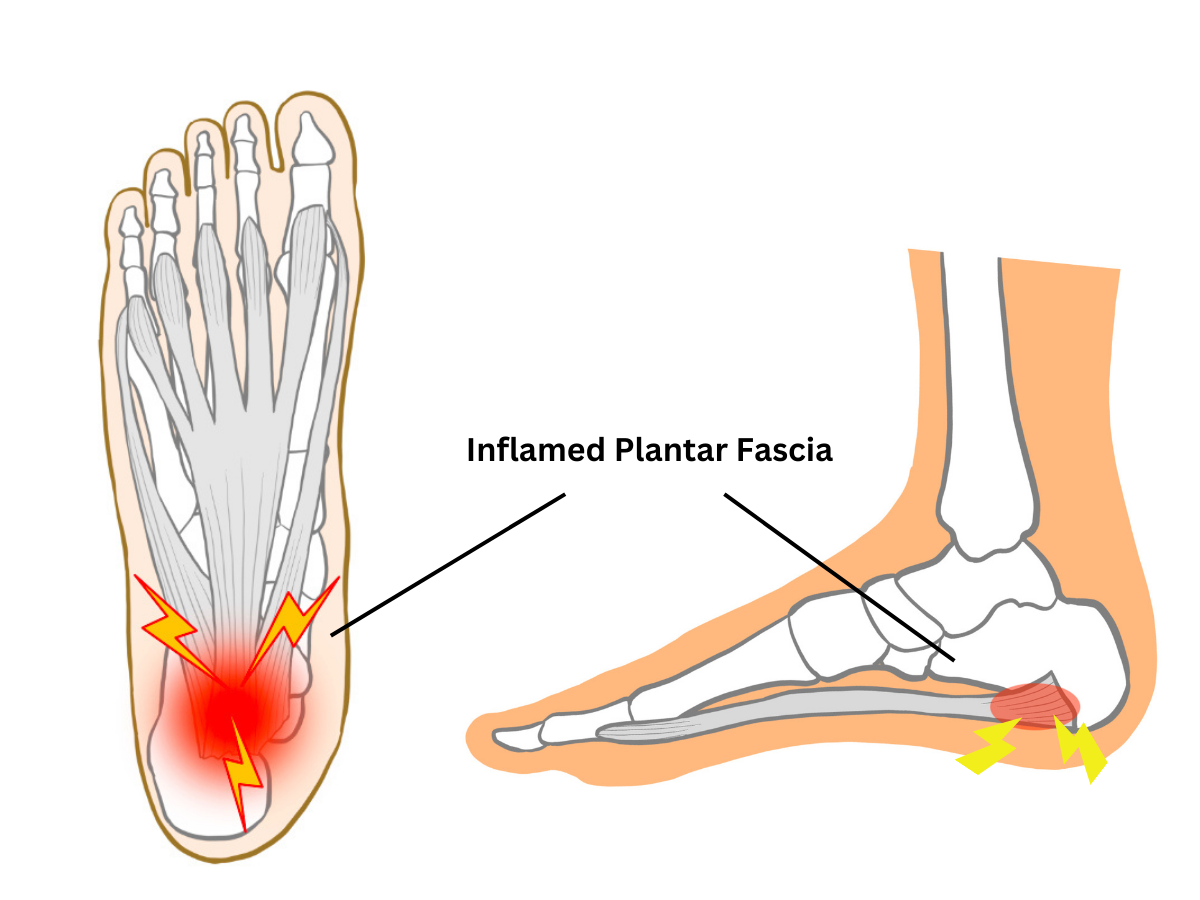
Plantar fasciitis is a condition where the plantar fascia, a thick band of tissue that connects the heel bone to the toes, becomes inflamed and painful. It is a common cause of heel pain, especially in runners and people who spend a lot of time on their feet.
Heel pain affects about 10% of the population, with an average age of 48. Interestingly, studies have shown that plantar fasciitis is more prevalent in women than men. Shockingly, every year, around 1 million people in the US seek help for this agonizing condition.
Plantar fasciitis is a condition that can be caused by two factors: internal or external. External factors are due to environmental changes that lead to improper impact on the sole of your feet, resulting in pain. This is a relatively easier fix as you can simply change the environment or habit for a while to help your feet recover. Internal factors, however, are more complex and are related to the body’s mechanism. As the body is connected like a chain, if it is not working properly, the sole of your feet may endure a lot of impact, especially from activities like running, jumping, or walking. If you apply too much force or strike it in the wrong way, it can cause inflammation and pain.
The number one cause of Plantar Fasciitis is overuse. Statistics show that 60% of patients with plantar fasciitis work outside and are on their feet all the time. And the researcher has found that somewhere between 4-22% of runners suffer from plantar fasciitis.
As mentioned earlier, when you run, the sole of your foot is the last part of your body to hit the ground. Even a slight increase in your weight can have a significant impact on it. For instance, if you gain 10 pounds, the force on your sole will increase to 20 pounds when you walk, and when you run, it can increase up to 6 to 10 times. This impact can be quite substantial, and you may wonder why your heel is painful when you gain weight.
Sometimes, people complain of discomfort after switching to a new pair of shoes. This happens because the shoes may not have enough cushioning or support for your feet. If you have flat feet, it’s best to avoid thin, flat shoes with unsupportive insoles or flip-flops. Wearing such shoes can put extra pressure on your feet and eventually lead to pain. So, it’s always better to choose shoes that provide ample support and cushioning for your feet.
The previous three reasons are fairly common and can be easily resolved. However, the next three causes are related to body mechanics. The human body is like a chain, and if one part is misaligned, another part compensates, leading to an increased force on that particular part. In this case, your feet bear the brunt of this force. While your symptoms may seem like isolated issues, resolving the root cause of the problem is essential to prevent the pain from recurring.
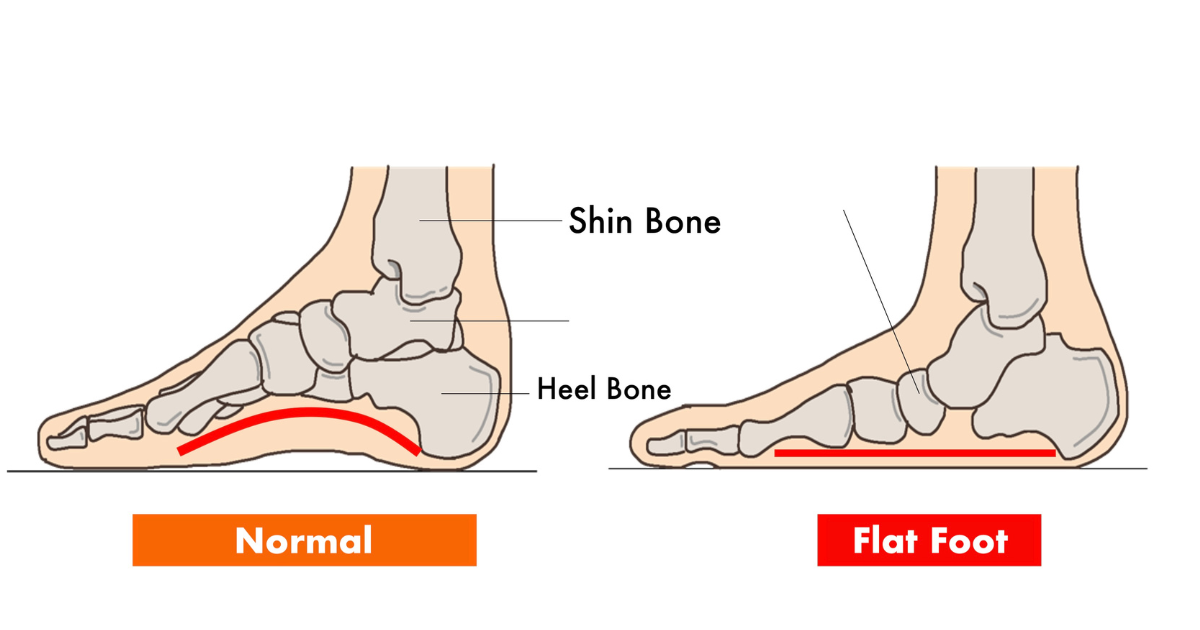
Flat feet are a common issue doctors diagnose, leading to Plantar Fasciitis. Having flat feet means that your feet tend to roll inward, causing all the weight to concentrate on the inside of your sole. It’s similar to driving a car with a flat tire. This is why insoles are recommended to adjust the angle of your feet. But, it’s just a temporary fix, like you put a band-aid on the scar. While pain in the toes and forefoot generally increased with age, pain in the arch and heel decreased with age.
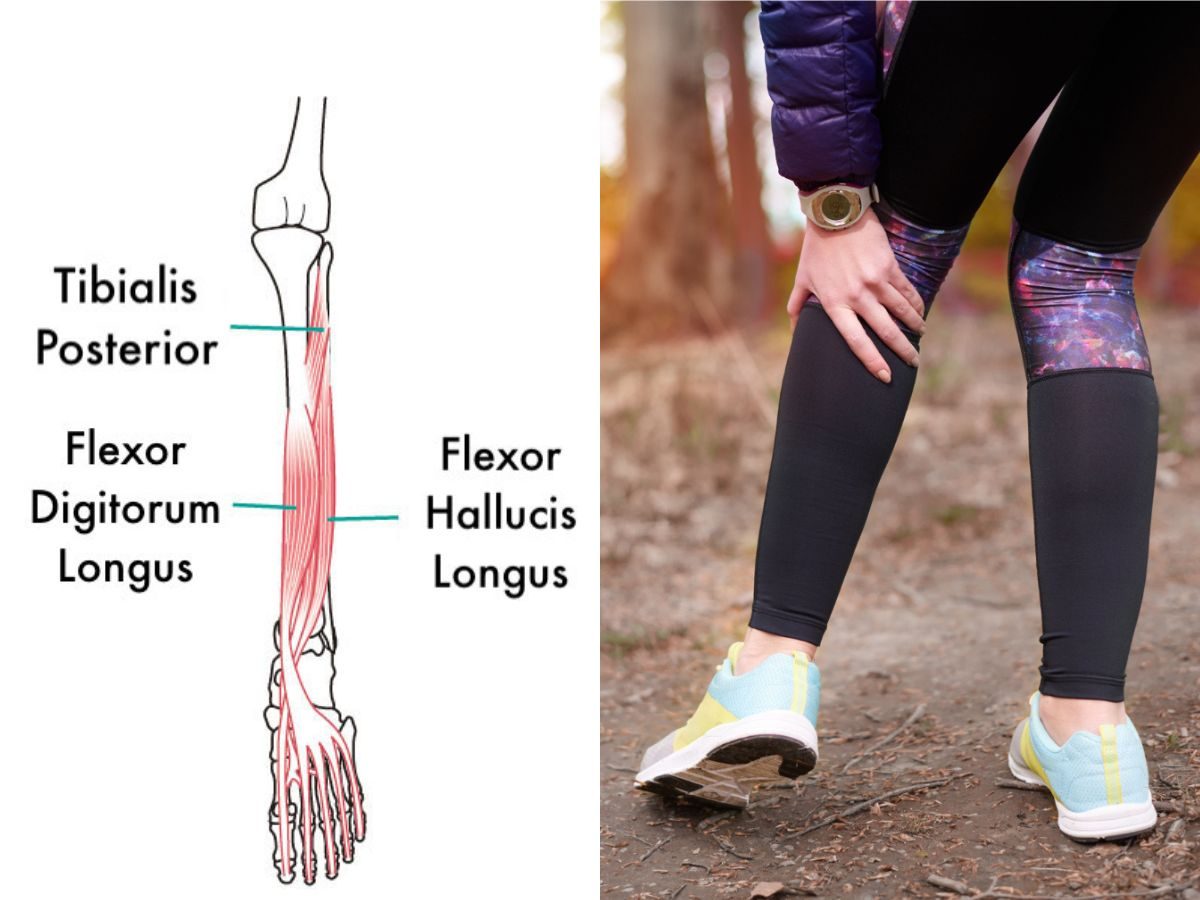
When examining the anatomy of the foot, it becomes apparent that most of the muscle in the calves is actually located on the sole of the foot, like Posterior Tibialis, Flexor digitorum longus, and Flexor hallucis longus. This means that if you have tight calf muscles, it can also affect your feet, leading to the development of plantar fasciitis.
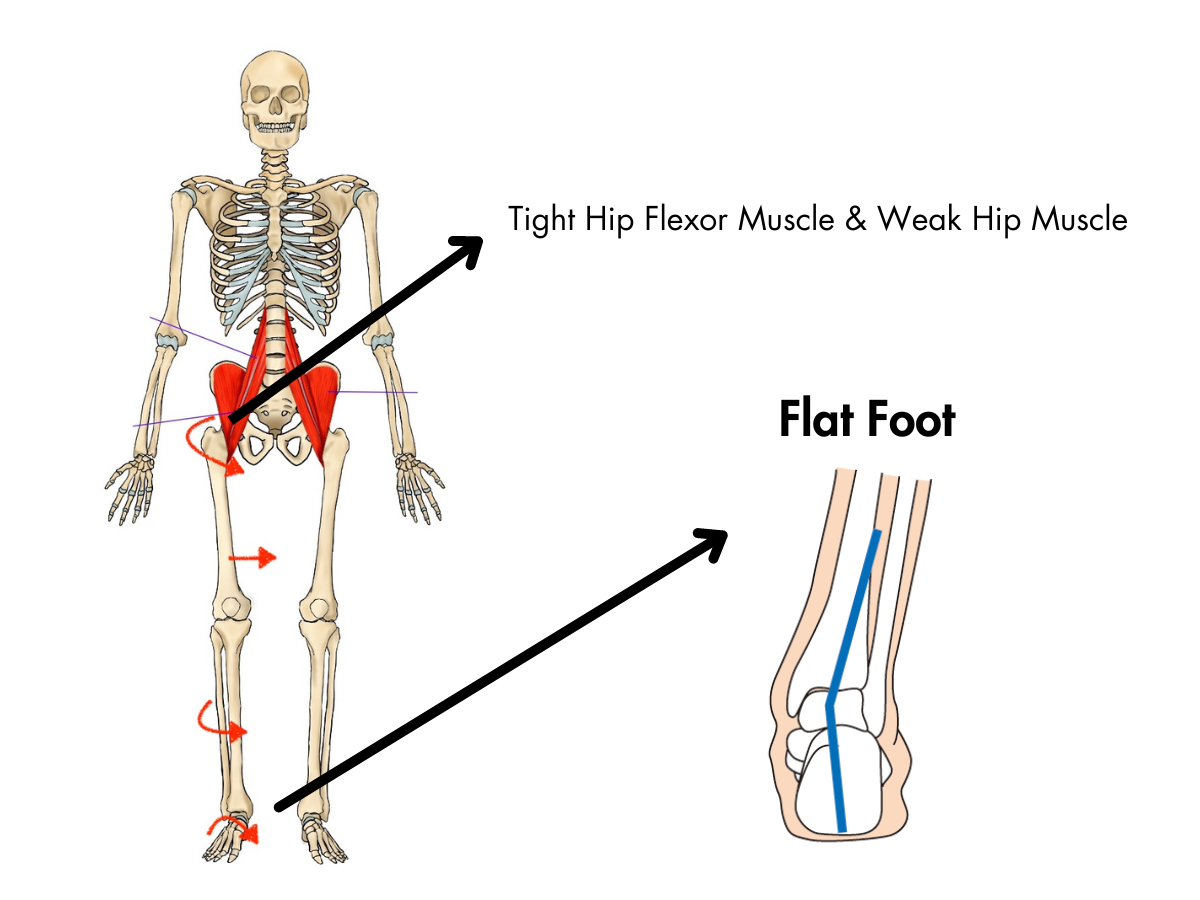
It’s not commonly known, but if you have weak hip muscles, your hip tends to rotate inward, which is called internal rotation. This inward rotation affects your thigh and knee, causing them to also turn inward. Consequently, your feet will be inverted due to these reasons. Having inverted feet is similar to having flat feet and can cause inflammation of the plantar fascia, leading to pain.
For those causes that I mentioned above, there are 6 simple steps and easy massages and stretches that you can do at home to release plantar fascia or heel pain. The first part is massaging the actual foot with your fingers, and the last three parts are easy stretching. Remember, if you ever feel too much pain or soreness, taking a break and rest is okay. Always listen to your body, and don’t push yourself too hard.
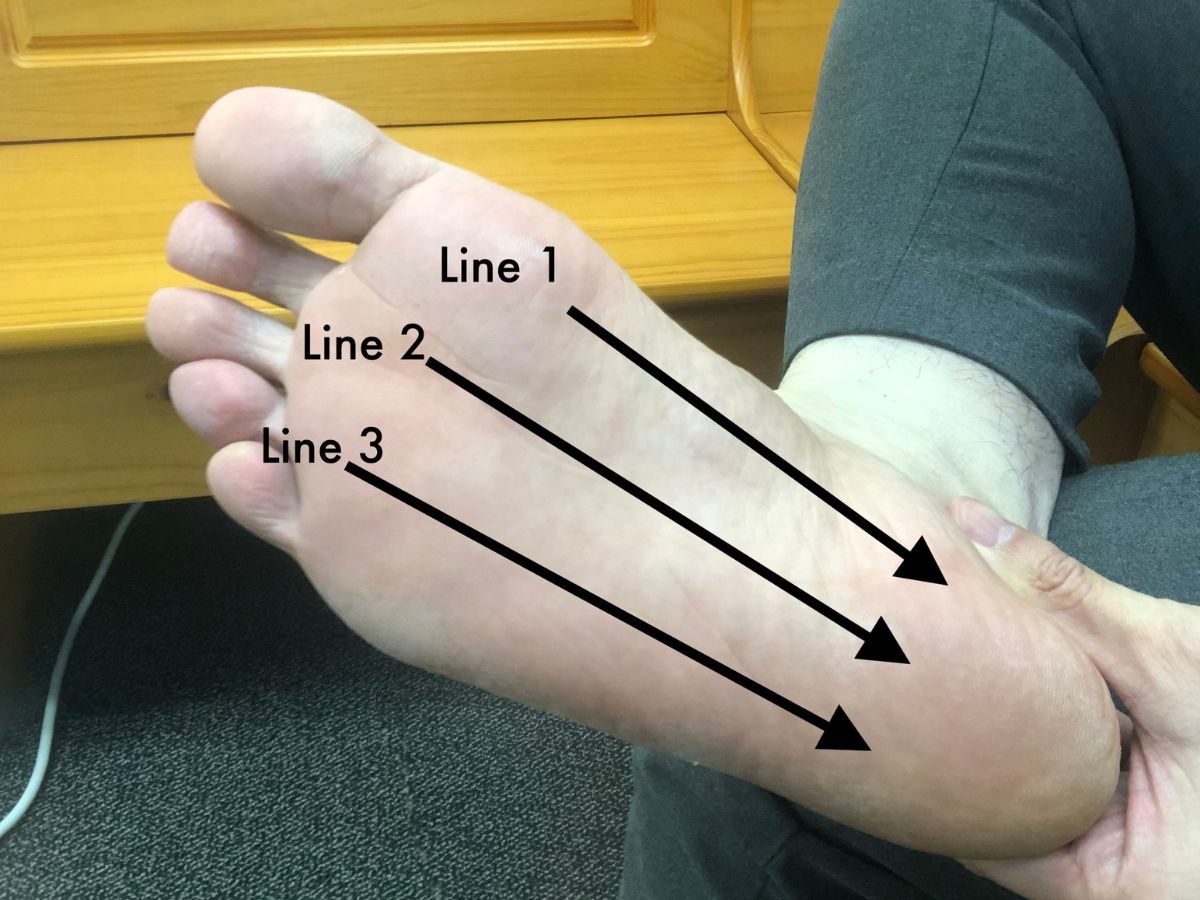
Please have a seat on a chair or the floor and grab your affected foot. Let’s imagine three lines. The first line should start from the root of your big toe and go all the way to the heel. The second line should start from the root of your center toes and go all the way to the heel. The third line should start from the root of the outside of your toes and go all the way to the heel.
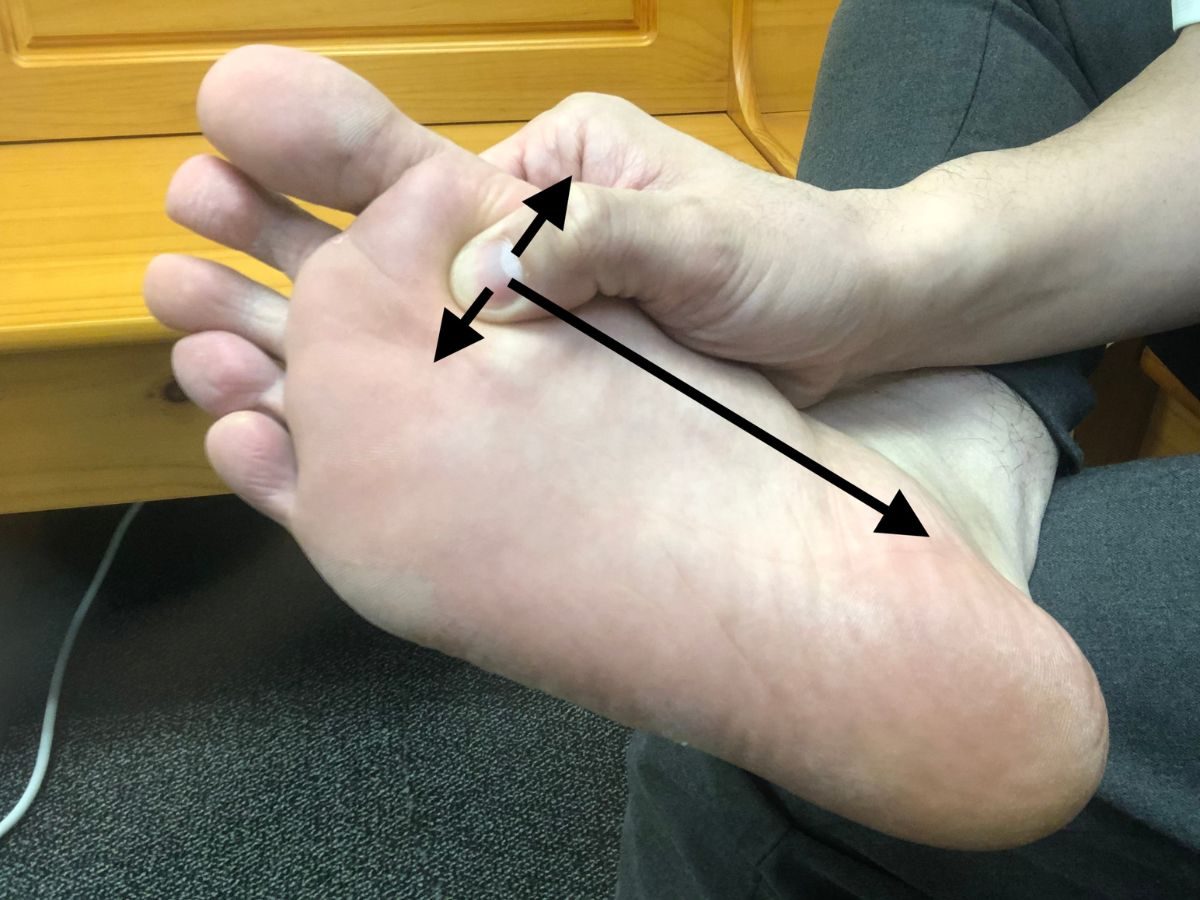
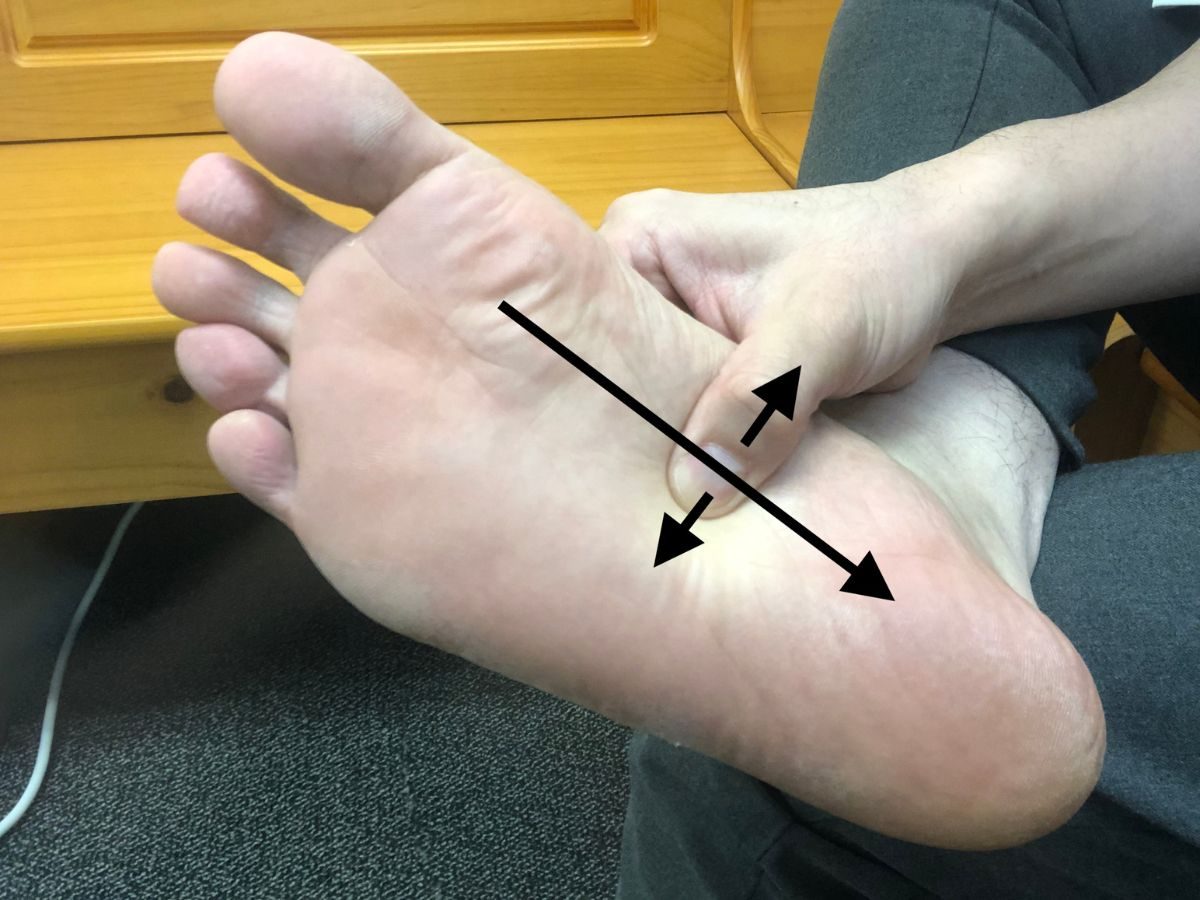
Let’s begin by applying pressure to the edge of your big toe using your thumb. The pressure should not be too hard or too soft, but just enough to make you feel slightly sore. Rub sideways, repeating the motion 15 times before moving on to the next part of the foot. Repeat the process until you reach the edge of your heel.
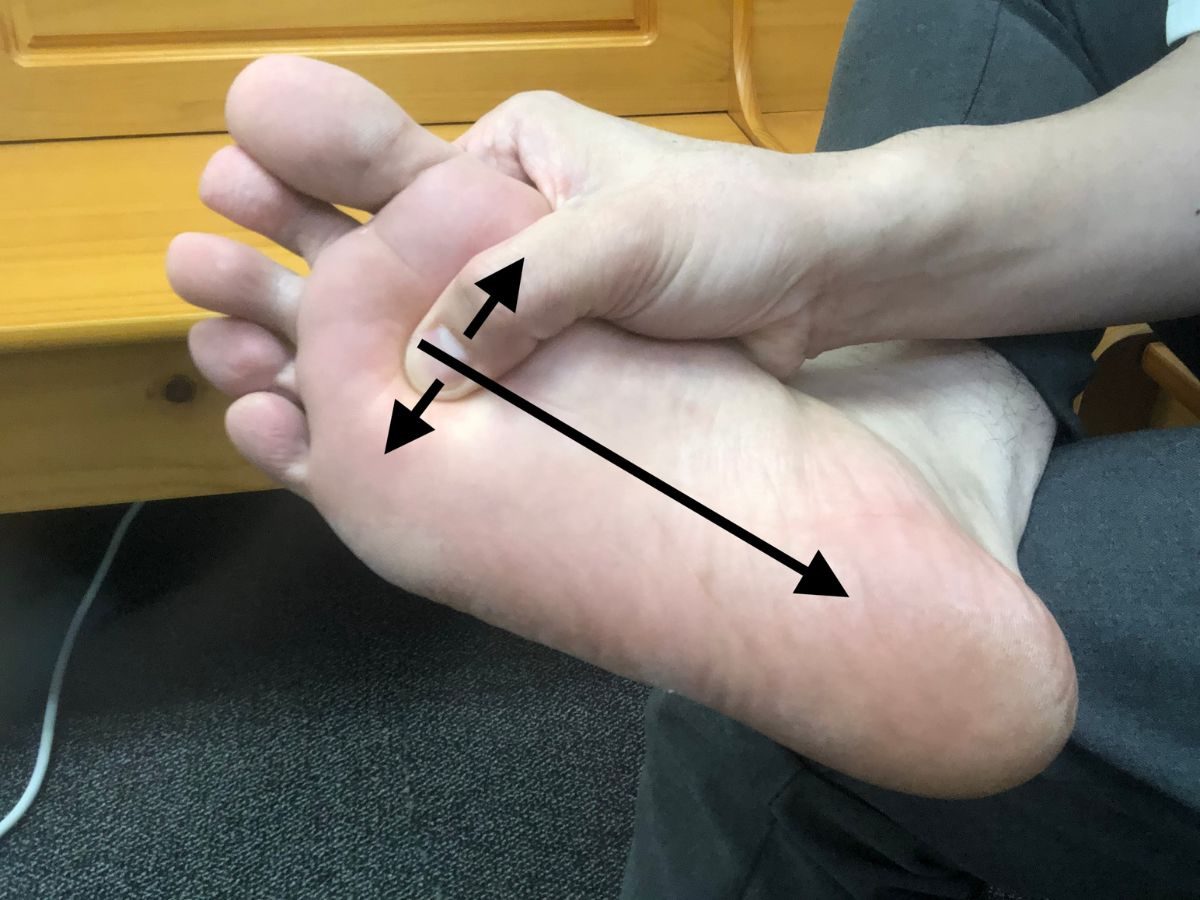

The second line starts from the root of the 2nd and 3rd toes. Use your thumb and apply pressure until you feel the right pressure. Rub sideways, repeating the motion 15 times before moving on to the next part of the foot. Repeat the process until you reach the edge of your heel.

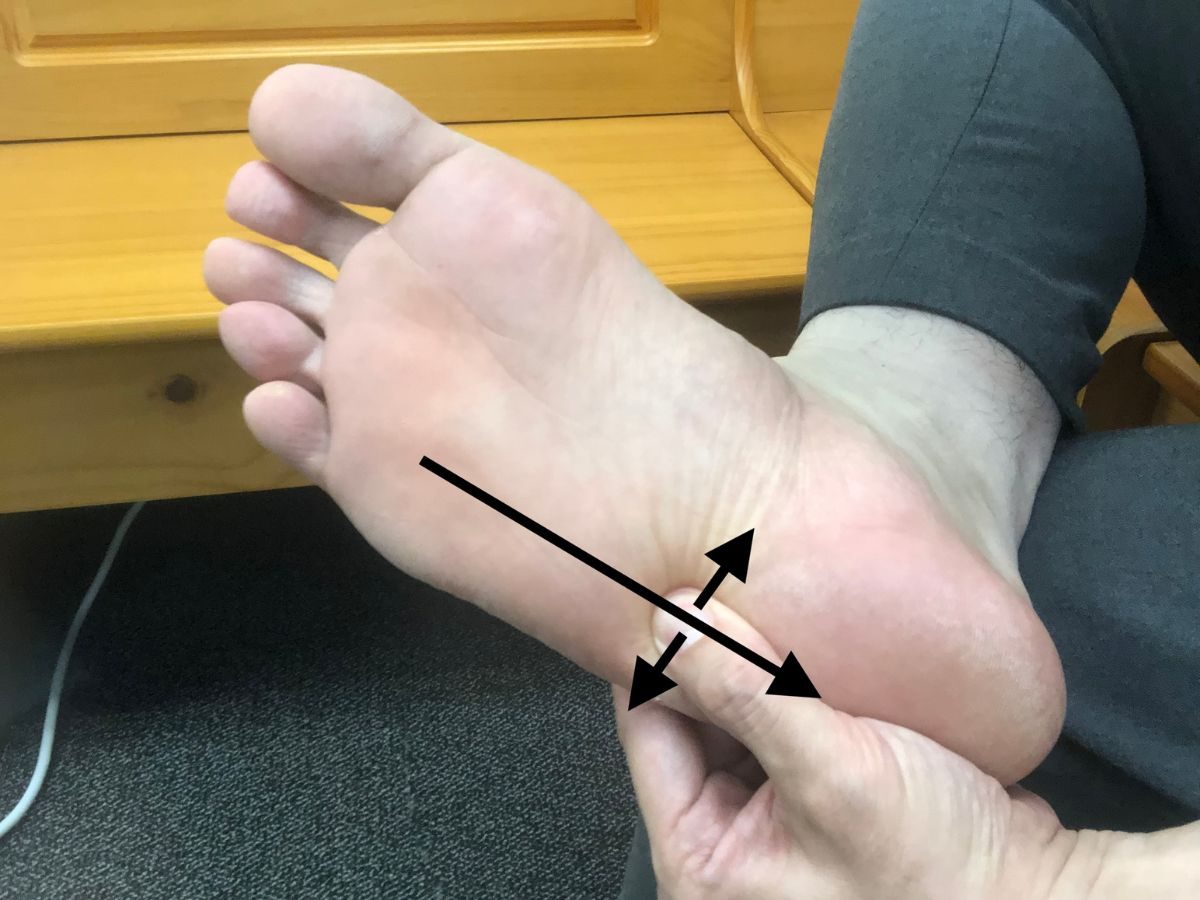
Begin by locating the third line, which starts from the root of your 4th and 5th toes. Use your thumb and rub sideways on this line, repeating the motion 15 times before moving on to the next part. Continue this process until you reach the edge of your heel.
Repeat this cycle 2 more times.
Let’s move on to the calf massage. Because there are muscles like the posterior tibialis, Flexor digitorum longus, and Flexor hallucus longus that are attached to your shin bone, I want you to release these tight muscles.
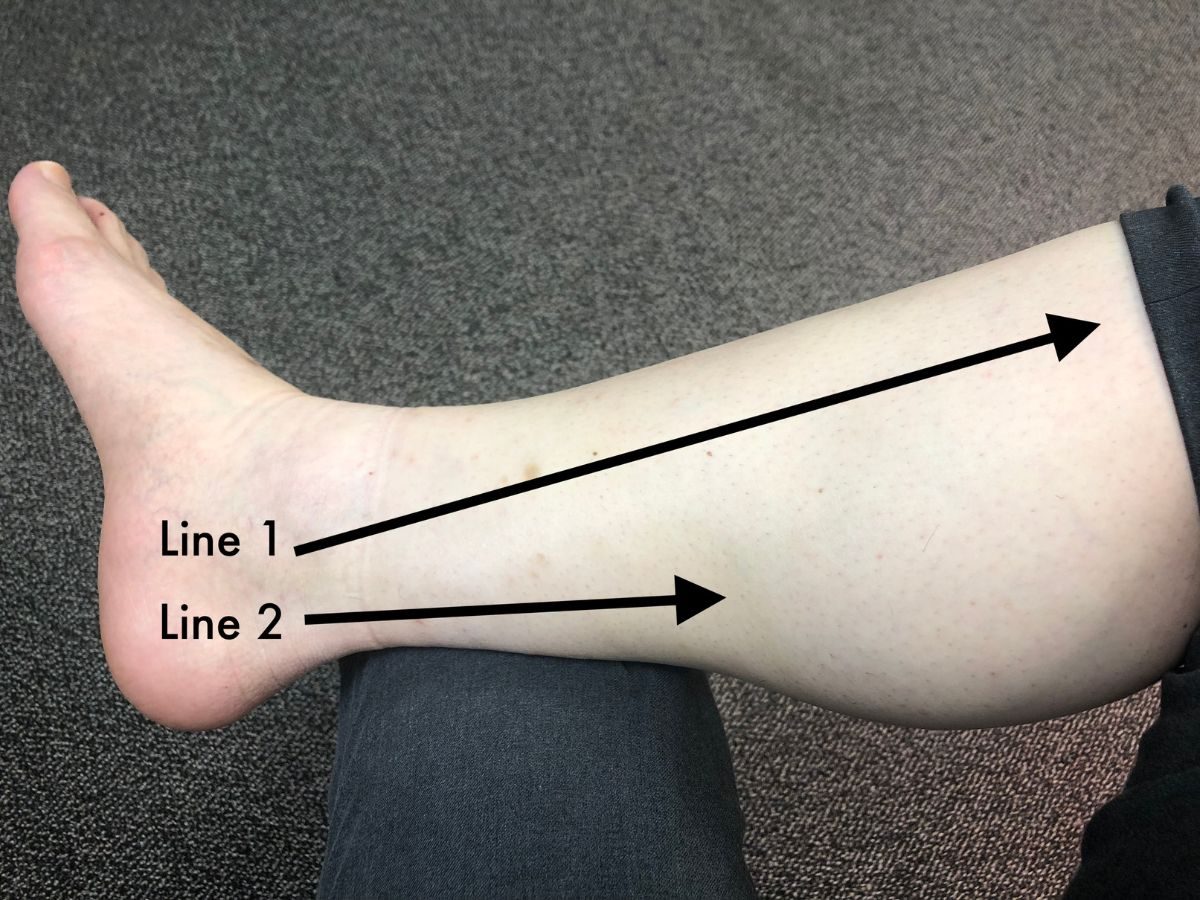
Please visualize two lines. The first line starts from the inside of your ankle bone (malleolus) and goes up to the corner of your shin bone. The second line starts from the edge of the Achilles tendon and runs up to the middle of your calf muscle. These muscles are located on the inside of your medial malleolus.

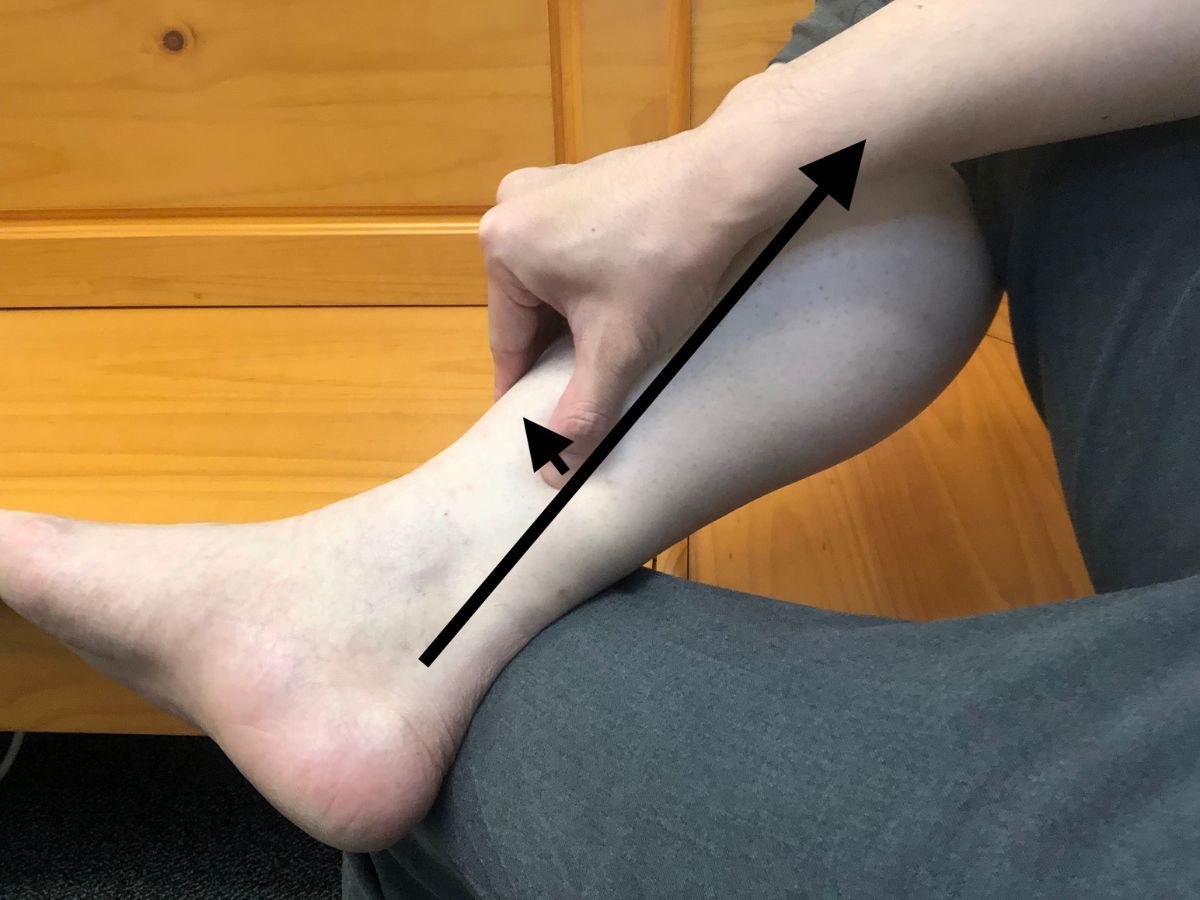

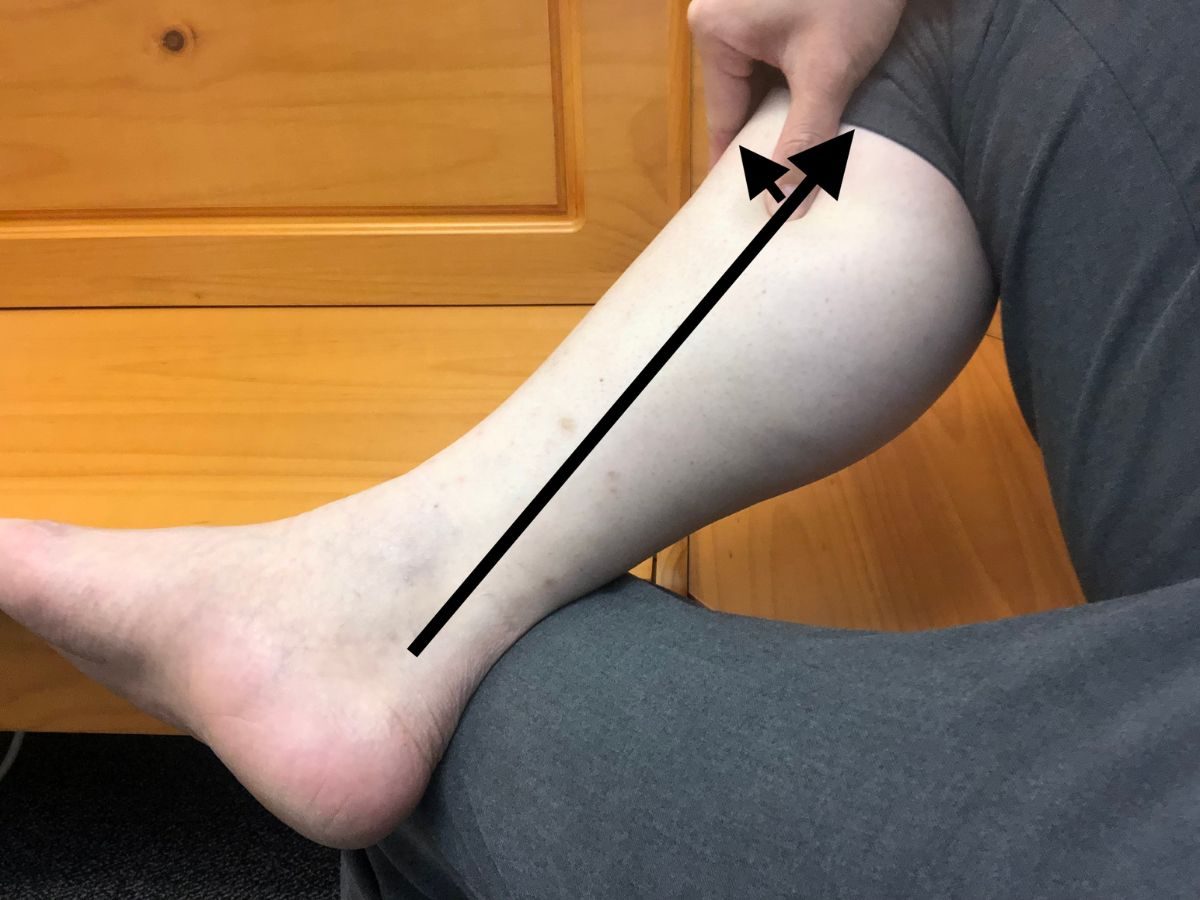
To massage your shin, use both of your thumbs and press against the bone gently. However, make sure not to apply too much pressure as there are blood vessels in this area. If you feel any pain, skip this area and move on to the next part. Rub up and down at the edge of the bone 15 times before moving on to the next part until you reach the edge of the shin bone.
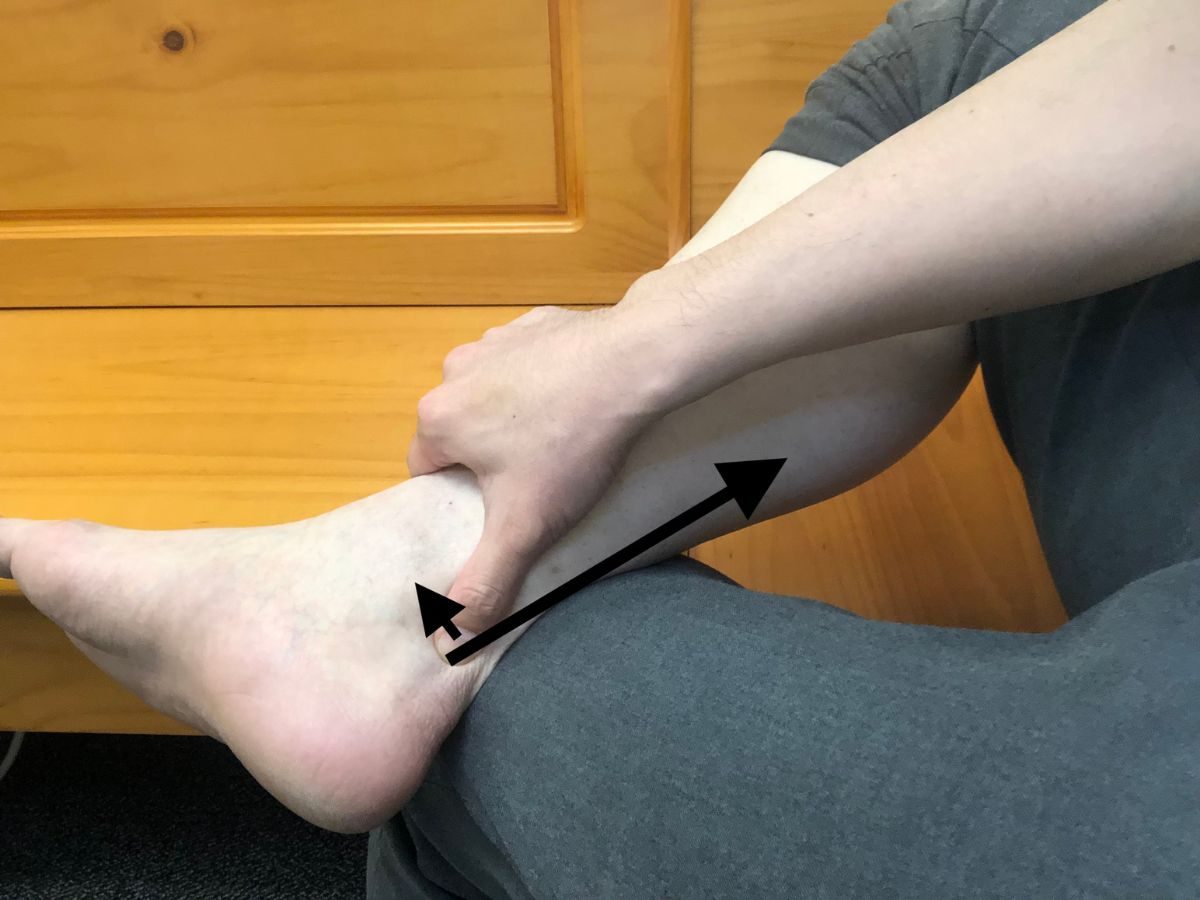
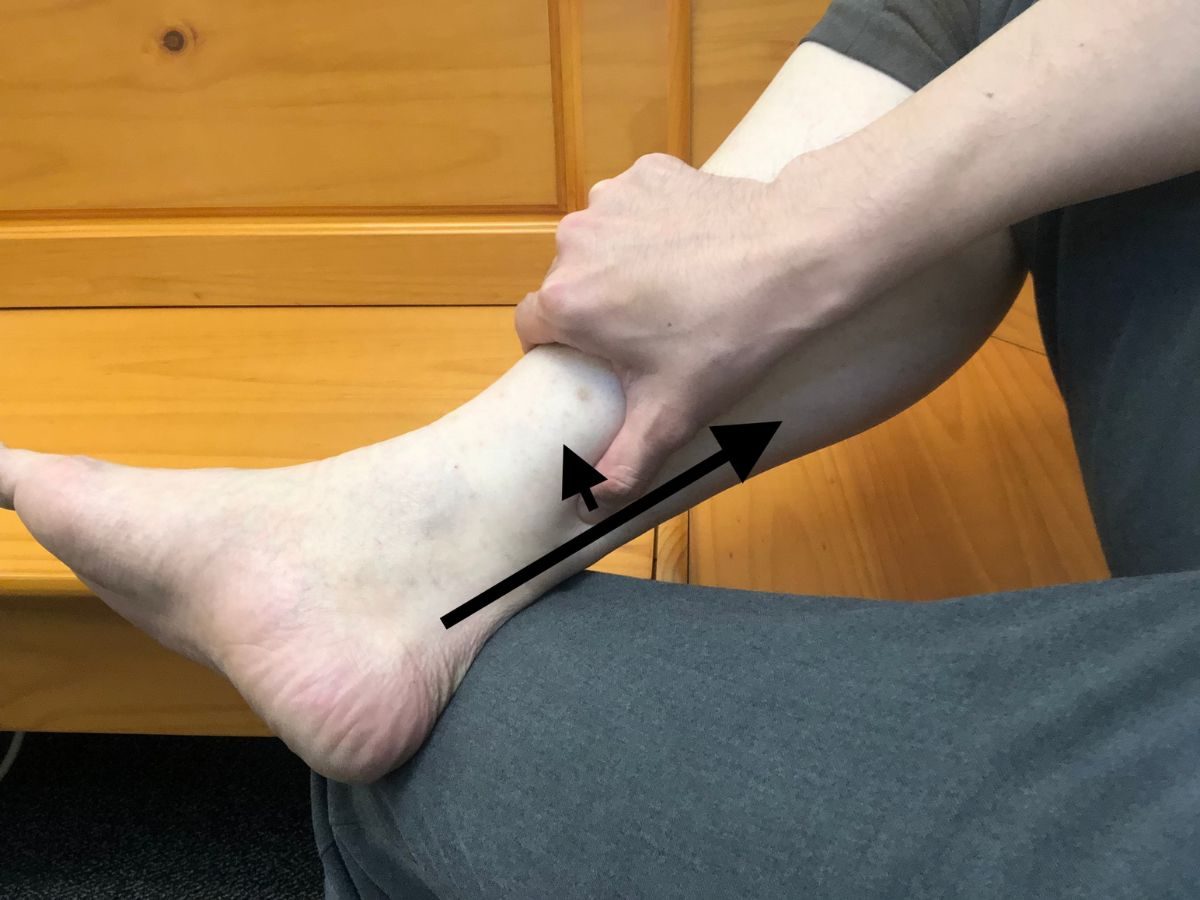
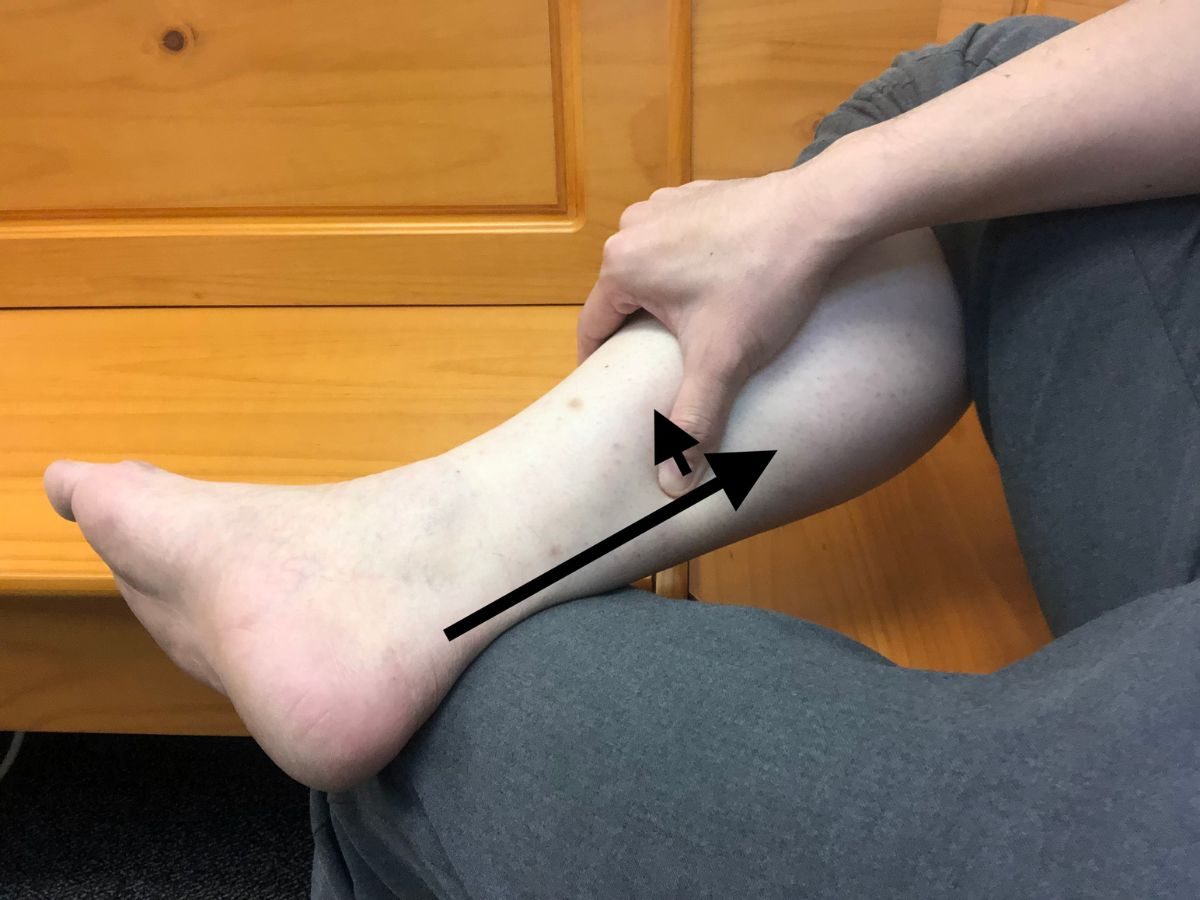
For the second line, start at the edge of the Achilles tendon and rub up and down 15 times before moving on to the next part. Repeat until you reach the middle of the calf muscle.
Please repeat this cycle two more times.
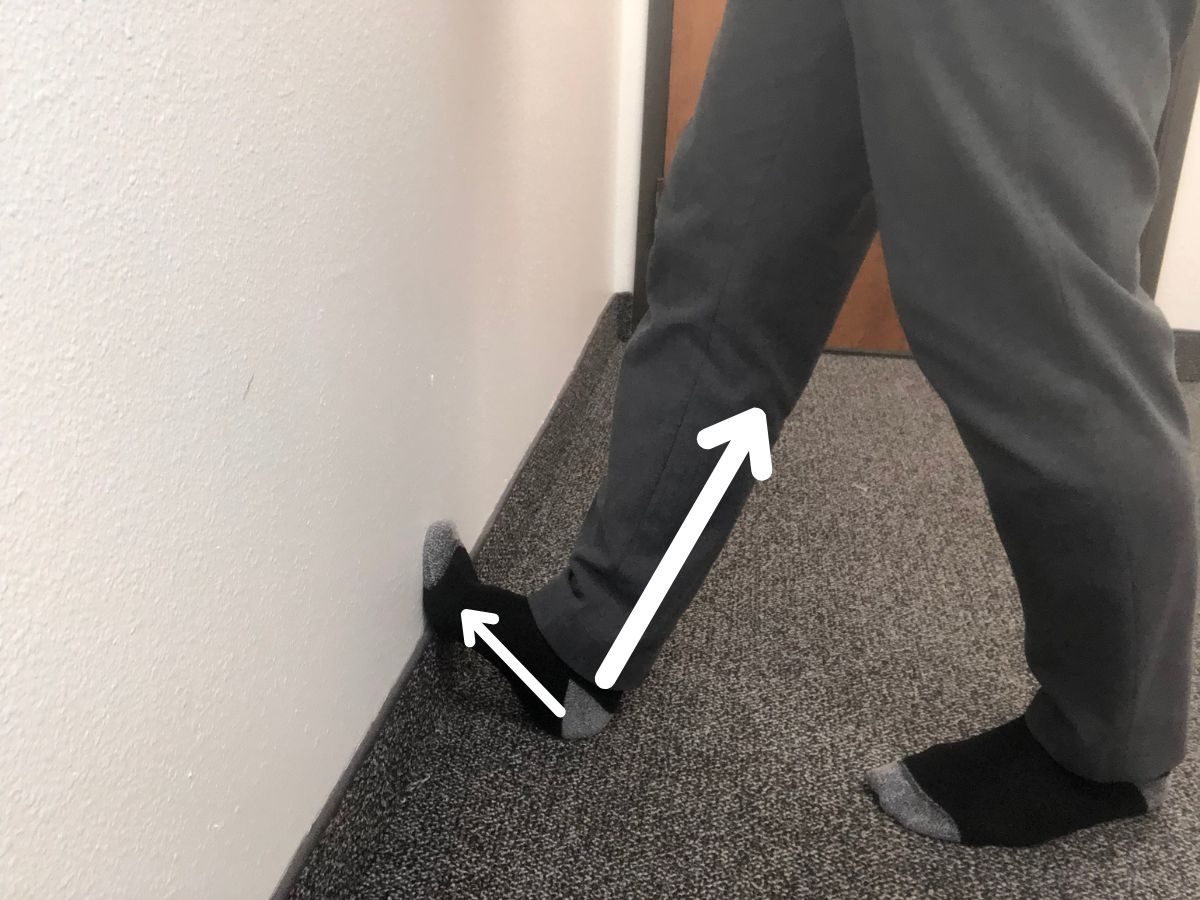
The second thing you should do is stretch your calf. First, place your hands on the wall and put your toes on the wall and straight your knee This stretch mainly focuses on your Gastrocnemius. Once you feel the stretch in your calf, hold it there for 15 seconds. While stretching, take a deep breath and relax. Repeat this two more times.
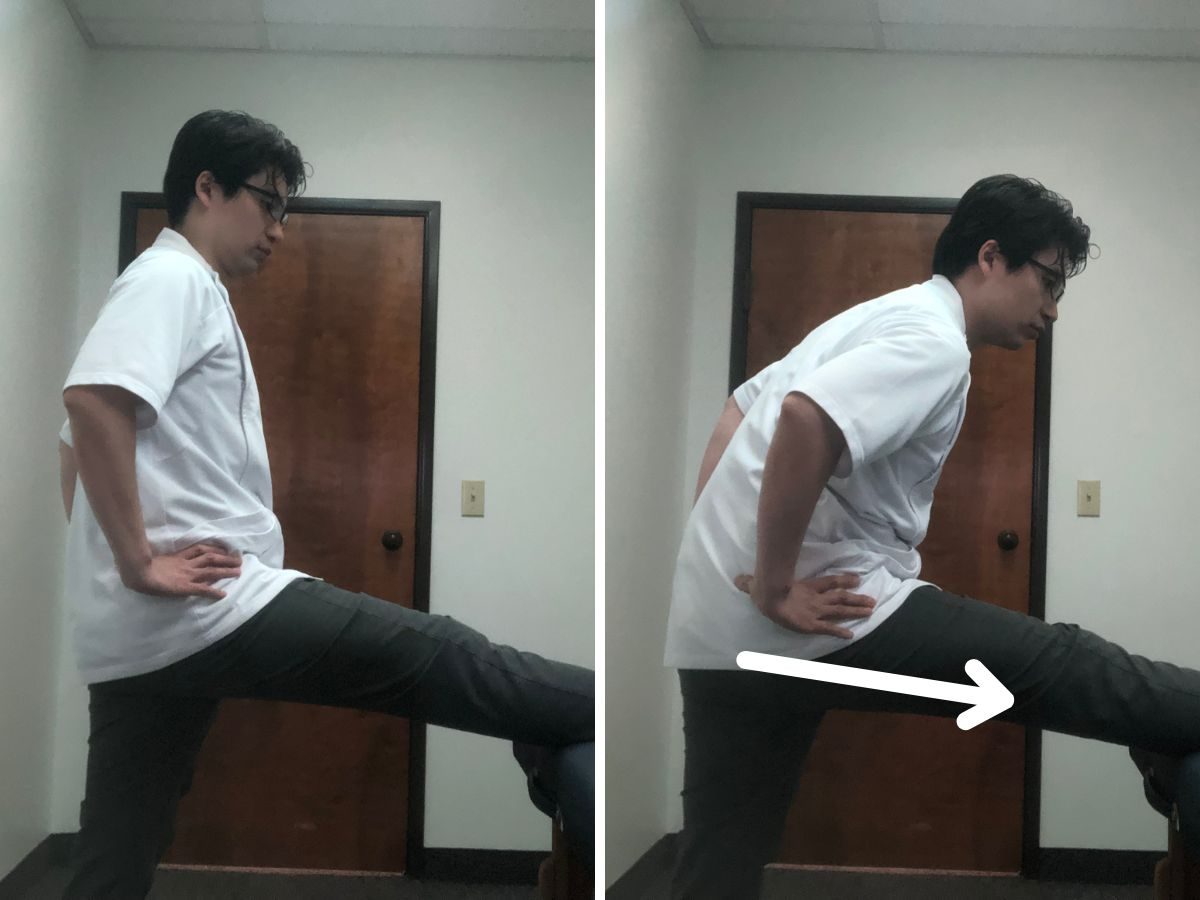
To stretch your hamstrings, please put your foot on the table with your knee straight. Try to touch your toes and take a deep breath as you exhale. Hold this position for 6 seconds, then relax. Repeat this set 2 more times. Remember, your body is all connected like a chain, so tight hamstrings can cause problems, too.
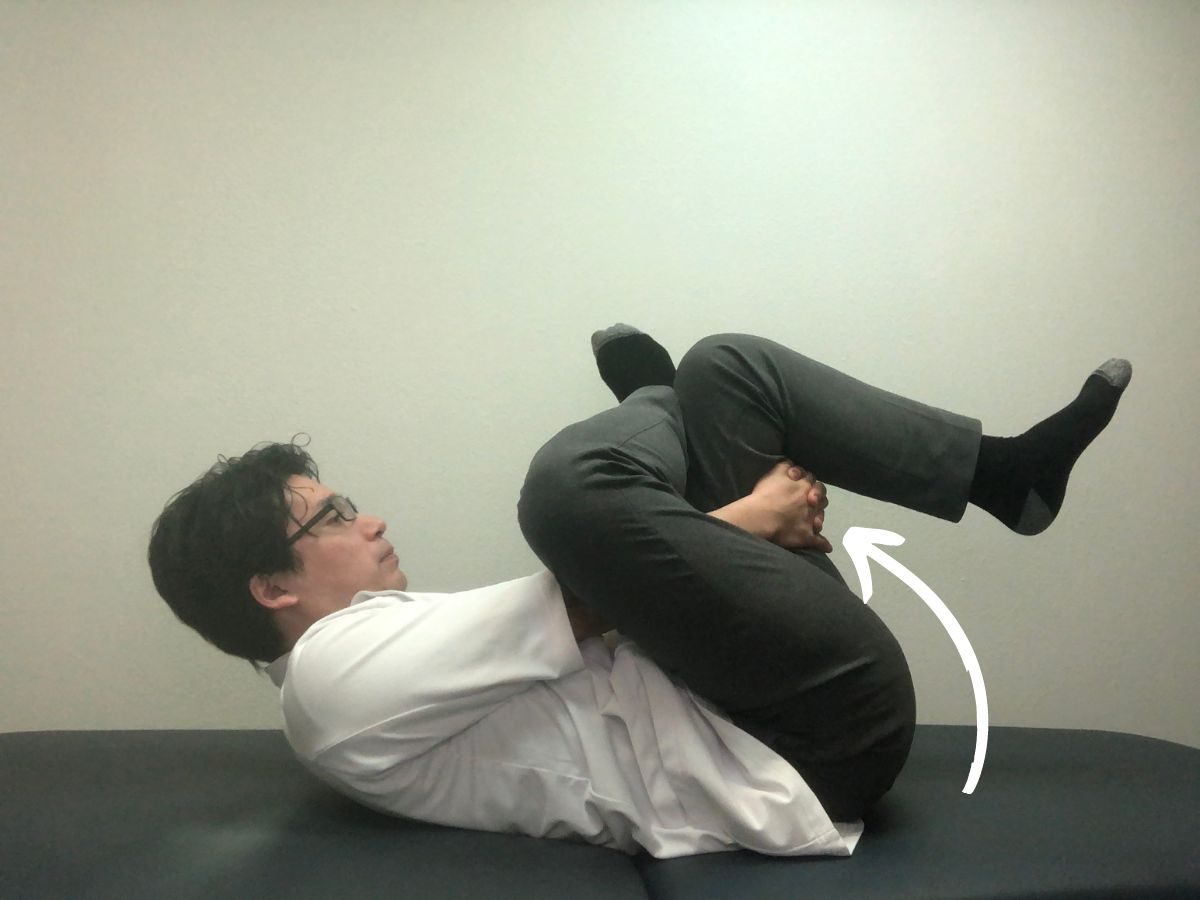
To stretch the muscles in your hips, such as the Gluteus Maximus, Medius, Minimus, and Piriformis, you can lie on your back, cross one leg over the other, and place your ankle on the opposite thigh. Then, grab the back of your thigh and gently pull your leg towards your chest. Hold this position for about 15 seconds before releasing. You should feel a stretch in your buttocks.
Just one more thing before you go. I recommend doing a foot sauna to warm up your feet – it’s actually quite relaxing! All you need to do is grab a bucket and fill it with some warm water, around 100 degrees (F) should do the trick. If you have any Epsom salt, toss in a handful to make it even more soothing. Then, just sit back and soak your feet for 20 minutes. This will help warm up your muscles and fascia, and soften your tissue, which will speed up the healing process and reduce inflammation.
Performing these exercises every day can bring about several benefits, such as faster healing and reduced swelling and pain levels. This can help you regain your ability to walk or run like before. However, if you still face difficulties with these activities, you can try alternative treatments like acupuncture before considering corticosteroid injections or surgery.
We'll be happy to answer your questions.
Acupuncture is a very effective treatment for plantar fasciitis. During your initial acupuncture session, we examined your feet and muscle tightness. If you’re experiencing pain, you may find it difficult to walk or put weight on your feet. The treatments we provide focus on reducing inflammation and swelling, as well as restoring movement to your feet. Acupuncture has been shown in many studies to be a practical solution for reducing pain and inflammation, thanks to its ability to stimulate the body to release its natural painkillers. Therefore, you’ll start feeling relieved from the pain after each session. Therefore, you’ll start feeling relieved from the pain after each session.
It is generally better to receive treatment for plantar fasciitis as soon as possible because the prognosis tends to be better. Some patients delay their treatment for several months or even years after the initial onset of the condition, which can make their cases more complex and require a longer time to achieve results. Even with treatment, recovery is not guaranteed.
Acupuncture treatments follow a simple rule when it comes to frequency. If the condition is acute or relatively new, it is most effectively treated with more frequent visits. On the other hand, chronic and old conditions can benefit from less frequent but more widespread treatments. For instance, if you have just experienced an onset of plantar fasciitis, you will probably be prescribed 2-3 treatments per week for the best results. Chronic cases, on the other hand, will generally require only one treatment per week.
If you or a loved one was diagnosed with plantar fasciitis and want to learn more about Acupuncture and whether it’s appropriate for your case, send us a message through our contact page. Thank you for taking the time to read this blog post! I appreciate your interest and hope to see you again for future posts.
We understand this can be a lot of information and overwhelming: if you are looking for more support and answers, set up a free consultation with our Pain Specialist, Satoru Ozawa. Share your story, get your questions answered, and learn how you can set yourself up for tremendous success in achieving a healthy life.
The following blogs discuss natural remedies, acupuncture, Chinese medicine, Chinese herbs, and tips for maintaining good health.
Living in Plano, you know the weather changes. Sudden storms and fronts cause barometric pressure migraines. Get help for the headaches and throbbing pain.
As a practitioner, my focus is on giving you the best tips for your health. But today, I want to share one that is at the heart...
Vestibular migraine: episodes of vertigo, dizziness, and imbalance without head pain. A neurological condition, not a simple balance issue.

Satoru Ozawa, L.Ac, ATC
hariQ acupuncture & herbs
Licensed acupuncturist, Certified Athletic Trainer and Chinese herbal specialist. With his 10 years of experience in Oriental Medicine, he will recommend the best natural Remedies, including Acupuncture, Chinese herbs, and health tips to relieve your suffering.